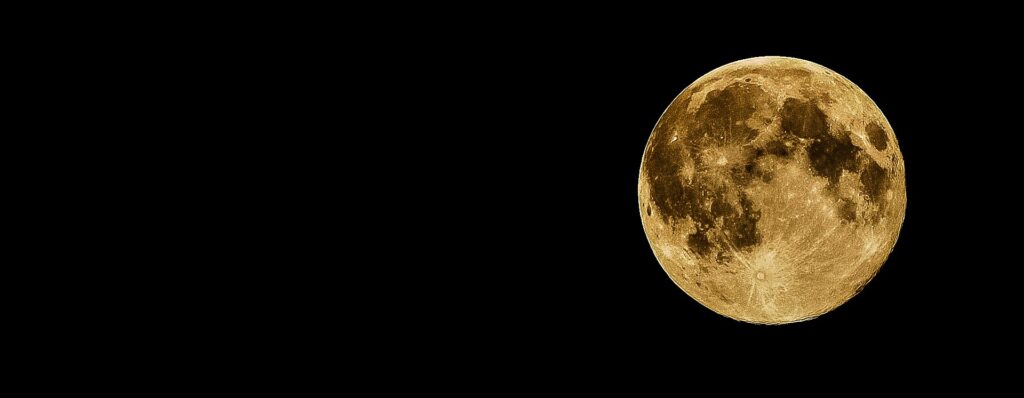
Introduction
The Moon is one of the most significant celestial bodies in astrology. As a luminary, it represents our psyche’s emotional and intuitive aspects, shaping our feelings and behaviors daily. In the birth chart, the Moon’s placement, aspects, and phases provide valuable insight into an individual’s emotional landscape, inner world, and overall temperament.
Throughout history and across cultures, the Moon has been revered as a symbol of femininity, intuition, and nurturing energy. It has been associated with various deities, myths, legends, inspiring poets, artists, and astrologers. Today, the Moon remains a crucial component of modern astrology, providing valuable information and guidance for those seeking to understand themselves and the world around them better.
This article will explore the many facets of the Moon in astrology. From its astrological significance and role in defining the emotional landscape of an individual’s birth chart to its relationship with other planets and its impact on the twelve astrological houses, we will delve into how the Moon shapes our lives and experiences. We will also examine the Moon’s phases, aspects, nodes, and retrograde motion, providing valuable insights for anyone interested in exploring this fascinating subject further.
The Meaning and Symbolism of the Moon
Unveiling Lunar Layers: The Emotional Connection to the Moon
From time immemorial, humans have been inexplicably drawn to the mesmerizing splendor of our celestial neighbor, the moon. This tantalizing luminary has long been associated with a profound emotional connection transcending rational comprehension.
The luminous presence of La Luna engenders feelings of serenity and tranquility within the human psyche, offering solace in moments of solitude. The moon’s ceaseless waxing and waning evoke an enduring representation of cyclicality, mirroring our emotional ebb and flow.
As it illuminates our darkest nights with its borrowed brilliance from the sun, so does it metaphorically light up the shadowy recesses of our subconscious mind, stirring dormant emotions and latent memories. Often regarded as reflective rather than emissive, symbolically, the moon embodies receptivity.
It is a mirror that reflects our deepest desires and fears, serving as a poignant reminder that even in darkness, we can find clarity. In astrology, this potent emotional kinship materializes through one’s natal Moon sign placement.
It uncovers not only how individuals express their emotions but also their fundamental needs for security and comfort. As such, understanding your lunar intricacies can serve as a roadmap to authentic self-discovery.
Arguably more influential than even the sun signs, your lunar sign reveals your interior world—the raw instincts and feelings that motivate you from beneath conscious thought processes. It provides insight into how we nurture ourselves and others, dictating what we seek for emotional fulfillment.
Silver Goddess: The Moon as Symbol of Femininity and Motherhood
The moon has consistently been anthropomorphized as a female entity in myriad cultures, embodying the quintessential qualities of femininity and motherhood. Its silvery radiance exudes a nurturing softness, often contrasted against the sun’s bright, assertive masculinity. In astrological parlance, the moon is associated with feminine yin energy—passive, receptive, and intuitive.
It governs our emotional nature, often linked to stereotypical feminine traits such as empathy, compassion, and sensitivity—the maternal aspect of the moon surfaces in its association with motherhood.
As mothers nurture life within their wombs and synchronize with menstrual cycles similar to lunar phases, so too does the moon symbolically nurture growth. This symbolism extends to its astrological rule over Cancer—a zodiac sign deeply connected to home life and maternal instincts.
However, this linkage does not restrict lunar significance solely to those who identify as female or mothers. Instead, it emphasizes an innate capacity for nurturing behavior inherent in all individuals regardless of gender or parental status.
It underscores that we are all cradled by lunar energy—an energy that compels us toward caregiving and emotional bonding. The moon’s connection to femininity and motherhood serves as a powerful reminder of our collective dependence on nurturing forces for growth—forces that exist within each one of us—thereby uniting humanity under a shared celestial heritage.
Lunar Rhythms: The Connection Between Lunar Cycles and Human Behavior
As ages have passed by, humans have become increasingly aware of an indelible link between lunar cycles and human behavior—a connection steeped in both scientific exploration and mystic curiosity. The waxing phase leading up to the full moon has been observed to usher in increased vitality and sociability among individuals—an optimal time for initiation projects or making important decisions.
Conversely, during its waning phase post the full moon, a general sense of introspection and calm takes hold, making it conducive for inner work and tranquility. The new moon phase—an instance of lunar invisibility—invokes a symbolic rebirth.
It is an advantageous time to set intentions, start anew, or sow the seeds for future endeavors. Similarly, the full moon—a time of maximum visibility—is seen as a period of fruition and culmination when intentions set during the new moon phase reach maturation.
From influencing agricultural cycles to marking auspicious occasions in religious calendars, from affecting sleep patterns to impacting moods—the cyclical dance of the moon holds sway over numerous facets of human life. Modern science continues to delve into these correlations, with studies exploring how lunar cycles affect mental health conditions, hormonal cycles, and even birth rates.
Our connection with the moon is far more than mere romantic fascination. Within its rhythmic waxing and waning resides an ethereal synchronicity that mirrors our life cycles—a cosmic echo reverberating through time, linking us intrinsically with this celestial lodestar.
The Lunar Phases and Their Significance in Astrology
A Detailed Exploration of Lunar Phases
The moon’s journey around the Earth, a fascinating dance that takes roughly twenty-eight days to complete, is divided into distinctive phases. These phases, namely the new moon, waxing moon, full moon, and waning moon, are created by how much of the lunar surface is illuminated by the Sun from our terrestrial perspective.
During the New Moon or dark moon phase, as it’s often referred to, the Moon is positioned between the Earth and the Sun. Even though the Sun illuminates a section of it, we on Earth cannot see it because this illumination happens on the side of the Moon turned away from us.
This phase symbolizes beginnings and fresh starts in astrological interpretations. The Waxing Moon phase constitutes two stages: The Waxing Crescent and the First Quarter.
As we see more of its lit surface during these phases due to its increasing distance from the position of the Sun concerning Earth, this represents growth and accumulation in astrology. At the Full Moon phase—when Earth is situated between the Sun and Moon—an entire half of its face shines brightly in our night sky.
Astrologically, this denotes the realization or culmination of goals followed by a moment for reflection. The Waning Moon follows after fullness has been achieved.
There are also two stages: The Last Quarter or Third Quarter and Waning Crescent. As less sunlight illuminates vis-à-vis our point-of-view, thereby dimming lunar visibility gradually till it becomes absent (New Moon), this signifies release or letting go in astrology.
Interpreting Astrological Significance for Each Phase
Astrologically speaking, each lunar phase carries its unique vibration, which impacts human behavior subtly but profoundly over time, as demonstrated repeatedly through empirical observation across cultures. During a New Moon, when celestial darkness reigns, it is an opportune moment to initiate new projects or set intentions for personal and professional goals. This is a time for planting seeds, much like a farmer who carefully places seeds into the fertile earth, knowing they will, over time, grow into something more significant.
As the moon waxes, so does our energy and enthusiasm. This is a time of growth, creativity, and forward momentum.
It’s conducive to building on intentions set during the new moon or taking steps toward accomplishing previously laid plans. The Full Moon phase bathes our world in its luminary splendor, symbolizing fruition, clarity, and illumination of previously obscure situations.
It offers us perspective on our achievements and how closely they align with our desires. However, it might also be a period of intense emotional energy, manifesting as restlessness.
During the Waning Moon phase, as lunar light decreases steadily till night once more wraps its velvety darkness around Mother Earth completely (New Moon), we are encouraged to reassess what has been achieved since the last New Moon—let go of what didn’t work out or doesn’t serve us any longer—to create space for upcoming new ventures. In essence, each lunar phase in astrology carries unique significance that affects individual life rhythms subtly yet profoundly—especially when interpreted in concordance with one’s natal chart—making them not only fascinating celestial phenomena but also valuable tools for introspective exploration and self-development.
The Moon’s Houses: Impact on Personality & Life Aspects
Unveiling the Astral Abodes: The System of Houses in Astrology
The structure of astrology’s celestial sphere is an intricate lattice, primarily composed of the twelve zodiac signs and a system of houses. Akin to the zodiac, the house system comprises twelve sectors as well.
However, while signs represent qualities or how energies are expressed, houses denote areas of life where those energies manifest. Each house correlates to different life aspects, such as selfhood, communication, relationships, and career, among others.
They dissect our human experience into distinct realms that each planet influences differently depending on their position at one’s birth time. Therefore, understanding each house is crucial for unveiling an individual’s astrological blueprint.
Astrologers often portray houses as a stage where planets perform their roles like actors. This performance at your birth moment sets off repercussions that shape your persona and life trajectory.
In essence, it can be said that when planets are actors playing out their cosmic drama with unique characteristics and propensities – houses are the backdrop against which this divine play unfolds. To delve deeper into this concept – envision a celestial wheel spun around you during your first breath; this forms your natal chart circle segmented into twelve sections akin to pie slices – these are the astrological houses.
Each sector holds a specific area of your life experience under its dominion, from identity to self-expression to spiritual enlightenment. In sumptuous simplicity yet profound complexity lies astrology’s blend of art and science, offering wisdom beneath its cryptic symbols and intricate calculations – unraveling which helps trace answers written in stardust about who we are and why we act in specific ways.
Through Lunar Lens: How Moon’s Position Influences Each House
When considering how celestial bodies influence our lives in astrology – the moon commands a prime spot. Known as the queen of emotions, the moon’s placement in our natal chart mirrors our emotional temperament and unconscious instincts. As the moon embarks on her monthly journey across the celestial sphere, she visits each house, bringing nurturing light to different life areas.
This lunar transit is akin to spotlighting various parts of your life experience and thus significantly impacts how we perceive and respond emotionally to various life situations. In the First House, traditionally associated with identity and self-perception, her presence may foster an intense emotional connection with self, driving one towards introspection.
Journeying to the Second House – the realm of values and material possessions – may stir feelings about financial security or lack thereof. The Third House visit triggers communication-based responses, while the Fourth House transit could stir deep-seated family or home-related sentiments.
Moon’s travel through Fifth House incites creative expressions, whereas its movement into Sixth House focuses on everyday routines or health matters. When in the Seventh House, relationship sentiments come upfront, whereas the Eighth House journey might provoke deep emotional transformations or awaken interest in mysteries.
Ninth house transit inspires philosophical contemplations, while the Tenth house visit stimulates career ambitions. Arrival at the Eleventh house evokes social consciousness alongside friendship connections. In contrast, finally, the Twelfth house – a realm linked with spiritual enlightenment – invites introspection and solitude, embracing one’s inner world before starting a new cycle afresh.
Each lunar transit across these houses illuminates our psyche’s various aspects, flashing light upon hidden corners where answers to our most profound queries lie waiting for discovery. By attending this celestial theatre through attentive observation and reflection, one can gain insightful revelations about their emotional ebbs & flows intricately entwined within their unique human experience tapestry.
The Moon’s Aspects in Astrology
The Moon’s aspects to other planets in the birth chart provide valuable information about how the other planets influence an individual’s emotional needs and temperament in their chart. Aspects are angles formed between planets, which can be harmonious, challenging, or neutral.
The most common aspects involving the Moon are the conjunction, opposition, trine, and square. The conjunction occurs when the Moon and another planet are in the same sign, indicating a blending of their energies. The opposition occurs when the Moon and another planet have opposite signs, indicating a tension or polarity between their energies. The trine occurs when the Moon and another planet are 120 degrees apart, revealing a harmonious energy flow between them. The square appears when the Moon and another planet are 90 degrees apart, indicating a challenge or tension between them.
Understanding the Moon’s aspects to other planets can provide valuable insights into an individual’s emotional needs, desires, and challenges. For example, if the Moon is in a challenging aspect to Saturn, it may indicate a struggle with depression, loneliness, or feelings of inadequacy. On the other hand, if the Moon is harmonious with Venus, it may indicate a strong emotional connection to beauty, love, and harmony.
The Moon’s Nodes in Astrology
The North and South Nodes of the Moon represent points in the sky where the Moon’s orbit intersects with the ecliptic (the apparent path of the Sun). In astrology, the Nodes represent our karmic path and our soul’s purpose. The North Node represents our direction in this lifetime, while the South Node represents our past life experiences and karmic baggage.
Understanding the Moon’s Nodes can provide valuable insights into an individual’s life path and soul’s purpose. For example, suppose the North Node is associated with relationships and partnerships in the seventh house. In that case, it may indicate that the individual’s karmic path involves developing strong and balanced partnerships in this lifetime. On the other hand, if the South Node is in the fourth house, which is associated with the home and family, it may indicate that the individual’s karmic baggage involves working through family, childhood, and emotional security issues.
The Black Moon Lilith – An Unexplored Aspect
Unveiling the Enigma: Understanding the Black Moon Lilith
The Black Moon Lilith, an often overlooked aspect in astrology, is as beguiling as its name suggests. Unlike other celestial bodies, it does not physically exist but represents a mathematical point in a person’s astrological chart – specifically, the apogee of the Moon’s orbit around Earth.
This point is where the Moon stands at its furthest possible distance from our planet. However, despite being an intangible element, it carries profound symbolic significance.
Its name comes from Jewish mythology and is associated with Adam’s first wife, Lilith, who was known for her willfulness and independence. These characteristics are echoed in its astrological interpretation.
In astrology circles, this seldom-mentioned phenomenon symbolizes our subconscious fears and ignored aspects of ourselves, which we need to acknowledge to attain spiritual growth and self-awareness. It can reveal deep-seated trauma or emotional turmoil that requires attention.
The Dark Side of the Lunar Aspect: Significance of The Black Moon Lilith
In your natal chart, the house that holds your Black Moon Lilith can give you insights into areas where you feel perpetually unsatisfied or harbor resentment or jealousy—you may struggle with these feelings in silence because they seem irrational or unacceptable. For instance, if your Black Moon Lilith resides in your third house, which governs communication and the immediate environment, perhaps there might be insecurities about expressing yourself freely due to past incidents or a fear of being misunderstood. On another level, though, when handled wisely, understanding what triggers these darker emotions through exploring your Black Moon Lilith could be akin to discovering hidden treasure; it enables one to confront these buried issues head-on, leading to immense personal growth.
Impact on Astrological Readings: The Unforeseen Influence of Black Moon Lilith
Placing the Black Moon Lilith in different astrological signs also provides a nuanced understanding of an individual’s deep-rooted fears and obsessions. If your Black Moon Lilith is in Capricorn, for instance, you might have an unreasonable obsession with public image and status or fear failure. This sign placement would suggest a struggle between your desire for leadership or power and the anxieties that it brings.
Contrastingly, if your Black Moon Lilith is in Cancer, it might indicate unresolved issues concerning nurturing, home life, or motherhood – perhaps these areas bring intense emotions due to past experiences. In essence, Black Moon Lilith adds another layer to astrological readings – one that could unlock profound self-awareness by shedding light on those shadowy corners of our psyche that we often choose to neglect.
Rarely Known Details about Lunar Eclipses
Lunar Eclipses: A Dance of Shadows
In the celestial ballet, a lunar eclipse manifests when the Earth aligns between the moon and the sun, casting a terrestrial shadow upon our luminous satellite. This enchanting celestial spectacle occurs during the full moon phase and can be perceived from anywhere on Earth where it’s night.
The event unfolds over a few hours, with total eclipses lasting up to an hour or so. Despite its universal visibility, many misconceptions persist about lunar eclipses.
For one, this event does not herald bad omens or calamities as ancient superstitions believed. Also, contrary to popular belief, lunar eclipses occur more frequently than solar ones.
Lunar Eclipse: A Tide of Transformation
Astrologically speaking, lunar eclipses are perceived as potent catalysts for change and transformation. This is because they deal with intimate issues relating to our emotional well-being and personal growth. When an eclipse graces your natal moon sign or a significant house in your chart, it’s said to ignite a period of profound introspection and self-discovery.
The effects can extend from a few weeks before six months after the actual eclipse. During this time, one might experience heightened emotions, unexpected revelations, or pivotal life changes.
Tips for Working with the Moon in Astrology
If you’re interested in working with the Moon in astrology, here are some tips to get you started:
- Get to know your own Moon placement. Your Moon sign and house can provide valuable information about your emotional landscape and inner world. You can better use this information to understand your needs, desires, and challenges.
- Pay attention to the Moon’s cycles and phases. The Moon’s cycles and phases can provide valuable insights into life’s natural ebb and flow. By paying attention to these cycles, you can learn to work with the energy of the moment, making the most of each phase for your personal growth and development.
- Track the Moon’s aspects. Aspects involving the Moon can provide valuable insights into your emotional needs and challenges. By tracking the Moon’s aspects to other planets, you can learn to navigate the challenges and opportunities of each aspect with greater awareness and intention.
- Work with the Moon’s Nodes. The North and South Nodes of the Moon can provide valuable insights into your soul’s purpose and karmic path. By exploring the Nodes in your birth chart, you can learn to align your life path with your soul’s purpose.
- Pay attention to the Moon in retrograde. The Moon in retrograde can be a time of emotional introspection and self-reflection. By paying attention to the Moon’s retrograde periods, you can learn to work with the energy of this period for your personal growth and development.
Final Thoughts
In conclusion, the Moon is a crucial component of astrology, providing valuable information and guidance for those seeking to understand themselves and the world around them better. From its astrological significance and role in defining the emotional landscape of an individual’s birth chart to its relationship with other planets, its impact on the twelve astrological houses, and its phases, aspects, and nodes, the Moon provides a wealth of insights into the natural rhythms of life and our personal growth and development. By working with the energy of the Moon, we can learn to align ourselves with the universe and make the most of each phase and aspect of our lives.
The Moon is a powerful and complex symbol in astrology, representing our emotional landscape, our inner world, and our intuitive nature. By working with the energy of the Moon, we can learn to understand ourselves and the world around us better, aligning our lives with the natural rhythms of the universe. Whether you’re a seasoned astrologer or just starting to explore this fascinating subject, the Moon is a crucial component of astrology that deserves our attention and respect.



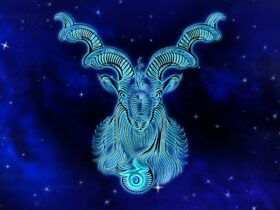
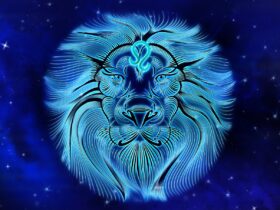
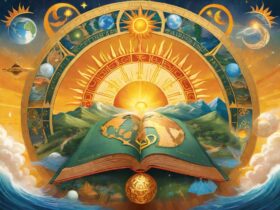
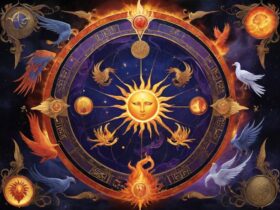
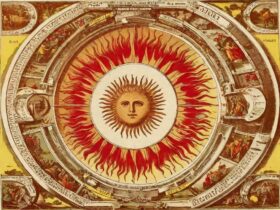
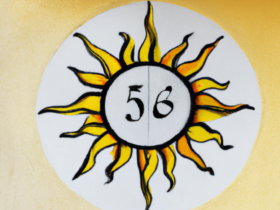
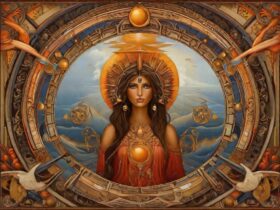

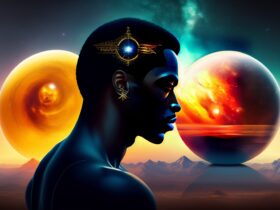
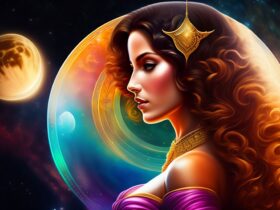


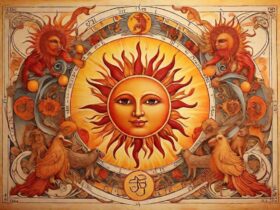

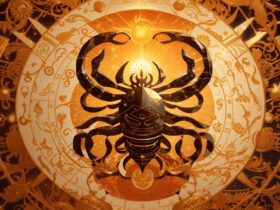
Leave a Reply